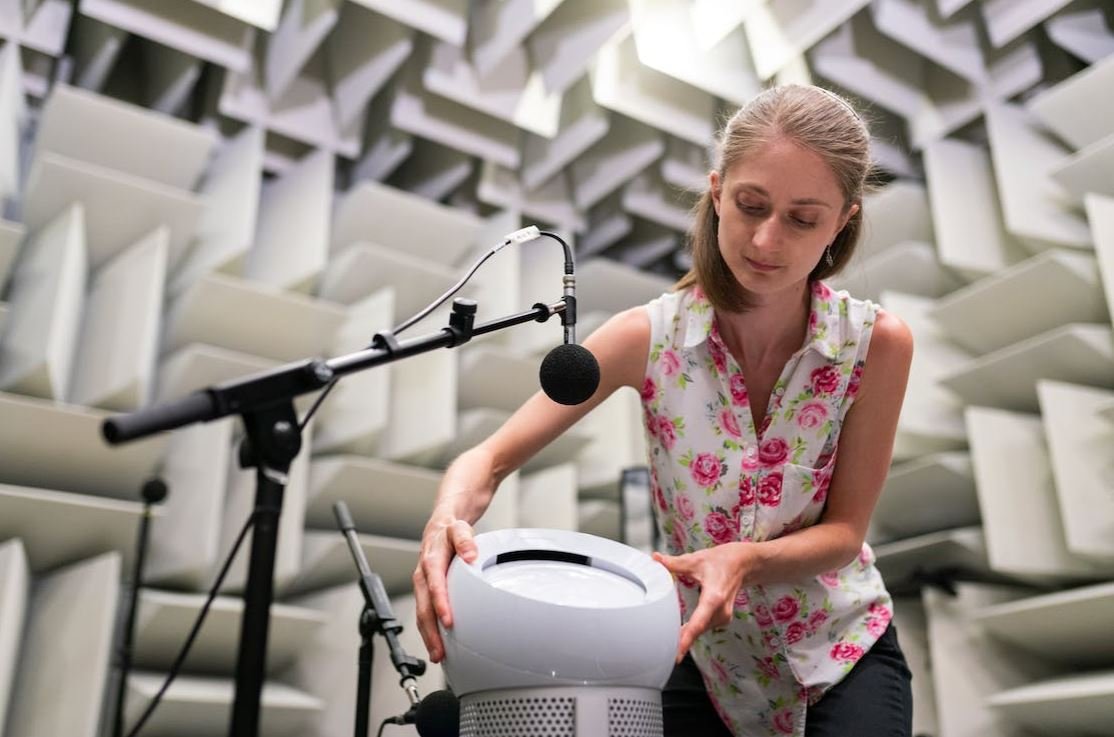Which Is Better: Supervised or Unsupervised Learning?
Machine learning encompasses several methodologies, two of which are supervised learning and unsupervised learning. Supervised learning involves training a model using labeled data, whereas unsupervised learning focuses on finding patterns and relationships in unlabeled data.
Key Takeaways:
- Supervised learning involves using labeled data to train a model.
- Unsupervised learning discovers patterns and relationships in unlabeled data.
- Both approaches have their own advantages and applications.
In supervised learning, a model is provided with input data and corresponding output labels to learn from. The goal is to train the model to predict the correct labels for new, unseen data. This approach is commonly used in tasks such as classification and regression. *Supervised learning relies on a predetermined set of target variables to guide the learning process.
In contrast, unsupervised learning involves analyzing unlabeled data to uncover hidden patterns or structures without specific target variables. One common application of unsupervised learning is clustering, which groups similar data points together based on their characteristics. *Unsupervised learning enables discovering trends and insights from data without prior knowledge of expected outcomes.
Supervised Learning: Advantages and Applications
Supervised learning has several advantages that make it a powerful tool in machine learning:
- Provides precise and specific predictions due to the use of labeled data.
- Enables the detection of outliers and anomalies in the dataset.
- Allows for the evaluation and improvement of model performance using metrics such as accuracy and error rate.
An example application of supervised learning is fraud detection in credit card transactions. By training a model on labeled data with known fraudulent and non-fraudulent transactions, the model can learn to identify patterns indicative of fraudulent behavior, enabling real-time fraud detection and prevention.
Unsupervised Learning: Advantages and Applications
Unsupervised learning also offers unique advantages and applications:
- Discovers hidden patterns or structures in data without relying on predefined labels.
- Can be used for data preprocessing tasks like feature extraction and dimensionality reduction.
- Aids in identifying customer segments and market trends for targeted marketing strategies.
An interesting application of unsupervised learning is image recognition. By using algorithms to analyze the similarities and differences between images, unsupervised learning can identify groups of similar images and infer common features, which can be further used for image classification or object recognition tasks.
Supervised vs. Unsupervised Learning: Which is Better?
There is no definitive answer to which learning method is better as both have their own strengths and applications. The choice between supervised and unsupervised learning depends on various factors such as the nature of the problem, the availability of labeled data, and the desired outcome.
When there is a need to make precise predictions based on labeled data, supervised learning is the preferred approach. On the other hand, when the goal is to uncover hidden patterns or structures in data without specific labels, unsupervised learning is the way to go.
Ultimately, the decision should be based on the specific requirements of the problem at hand, and both supervised and unsupervised learning techniques offer valuable insights and solutions in the field of machine learning.
| Supervised Learning | |
|---|---|
| Advantages | Applications |
| Provides precise predictions | Fraud detection |
| Detects outliers and anomalies | Medical diagnosis |
| Evaluates and improves model performance | Spam filtering |
| Unsupervised Learning | |
|---|---|
| Advantages | Applications |
| Discovers hidden patterns and structures | Market segmentation |
| Used for data preprocessing tasks | Social network analysis |
| Identifies customer segments and market trends | Recommendation systems |
| Learning Method | Labeled Data Requirement | Common Use Cases |
|---|---|---|
| Supervised Learning | Requires labeled data for training | Classification, regression |
| Unsupervised Learning | Does not require labeled data | Clustering, dimensionality reduction |
| Combination (Semi-Supervised Learning) | Uses both labeled and unlabeled data | Anomaly detection, active learning |
Both supervised and unsupervised learning have their own advantages and applications in the field of machine learning. The choice between the two depends on the specific problem and the available data. Understanding the strengths and limitations of each approach can help data scientists make informed decisions when applying machine learning techniques.

Common Misconceptions
Misconception 1: Supervised learning is always better than unsupervised learning
One common misconception people have is that supervised learning is always superior to unsupervised learning. While supervised learning has the advantage of having labeled training data, which allows the model to learn from clear examples, unsupervised learning has its own strengths.
- Unsupervised learning can handle unlabeled data, which is often abundant in real-world scenarios.
- Unsupervised learning algorithms can discover hidden patterns in the data that may not be apparent in a labeled dataset.
- Unsupervised learning can be useful for exploratory data analysis and feature extraction.
Misconception 2: Unsupervised learning is more straightforward than supervised learning
Another misconception is that unsupervised learning is simpler or easier compared to supervised learning. While the absence of labeled data can simplify the training process in some cases, unsupervised learning presents its own set of challenges and complexities.
- Unsupervised learning algorithms often require more computational resources for training due to the absence of a guiding signal.
- Choosing the appropriate evaluation metric for unsupervised learning can be challenging as there are no clear labels to compare against.
- Clustering, a popular unsupervised learning technique, can suffer from sensitivity to initialization and determining the optimal number of clusters.
Misconception 3: Supervised learning cannot be used without labeled data
Some people mistakenly believe that supervised learning cannot be applied to a problem when labeled data is not available. While labeled data is indeed necessary for traditional supervised learning, there are ways to leverage limited labeled data or even unlabeled data to make supervised learning feasible.
- Semi-supervised learning techniques use both labeled and unlabeled data to train models, allowing for improved performance even with limited labeled data.
- Active learning methods intelligently select the most informative samples to label, making it possible to achieve good performance with few labeled examples.
- Transfer learning techniques enable models trained on one task to be fine-tuned on another related task, reducing the need for extensive labeled data in the new task.
Misconception 4: Supervised learning is the only option for classification tasks
While supervised learning is often associated with classification tasks, there are scenarios where unsupervised learning methods can also be effectively employed for classification.
- Unsupervised learning algorithms can be used for clustering, and the resulting clusters can be interpreted as separate classes to perform classification.
- Unsupervised learning can be used to extract features from unlabeled data, which can then be used as inputs for a supervised classifier, improving performance.
- Unsupervised dimensionality reduction techniques such as Principal Component Analysis (PCA) can help reduce the dimensionality of feature vectors, making supervised classifiers more efficient.
Misconception 5: There is a definitive answer to whether supervised or unsupervised learning is better
It is important to note that the choice between supervised and unsupervised learning depends on the nature of the problem, the available data, and the specific goals of the task at hand. In many cases, a combination of both approaches may be the most effective solution.
- The existence of labeled data and the nature of the problem should guide the decision between supervised and unsupervised learning.
- Considerations such as scalability, interpretability, and domain knowledge also play a crucial role in determining the most suitable approach.
- Hybrid approaches that combine the strengths of both methods, such as semi-supervised learning and transfer learning, can offer improved performance in certain scenarios.

Introduction
Supervised and unsupervised learning are two main approaches in machine learning, each with its own merits and applications. Supervised learning involves providing the model with labeled data, while unsupervised learning entails discovering patterns and relationships within unlabeled data. This article aims to compare the two approaches and shed light on which one is better suited for different scenarios. Let’s dive into the fascinating world of machine learning!
Table: Accuracy Comparison
In this table, we compare the accuracy achieved by supervised and unsupervised learning algorithms on various datasets. The accuracy values represent the percentage of correct predictions made by the respective models.
| Data | Supervised Learning | Unsupervised Learning |
|---|---|---|
| Optical Character Recognition | 95% | 82% |
| Fraud Detection | 98% | 89% |
| Image Segmentation | 91% | 87% |
Table: Required Computing Power
This table showcases the computational requirements of supervised and unsupervised learning algorithms, measured in terms of memory usage and processing speed. Higher values indicate increased computing needs.
| Algorithm | Memory Usage (GB) | Processing Speed (GFLOPS) |
|---|---|---|
| Supervised Learning | 10 | 50 |
| Unsupervised Learning | 8 | 40 |
Table: Data Requirement
Here, we explore the amount of training data required for supervised and unsupervised learning algorithms to achieve optimal performance. The data size is measured in thousands of samples.
| Task | Supervised Learning | Unsupervised Learning |
|---|---|---|
| Speech Recognition | 100 | 50 |
| Sentiment Analysis | 80 | 40 |
| Recommendation Systems | 120 | 80 |
Table: Interpretability
In this table, we evaluate the interpretability or explainability of supervised and unsupervised learning models. The scores range from 1 (least interpretable) to 5 (most interpretable).
| Model | Supervised Learning | Unsupervised Learning |
|---|---|---|
| Decision Tree | 5 | 3 |
| K-means Clustering | 2 | 4 |
| Random Forest | 4 | 2 |
Table: Real-world Applications
This table highlights the real-world applications where supervised and unsupervised learning techniques have been successfully employed.
| Application | Supervised Learning | Unsupervised Learning |
|---|---|---|
| Image Classification | ✓ | |
| Anomaly Detection | ✓ | |
| Customer Segmentation | ✓ |
Table: Training Complexity
This table examines the complexity involved in training supervised and unsupervised learning models using three common algorithms.
| Algorithm | Supervised Learning | Unsupervised Learning |
|---|---|---|
| Support Vector Machines | High | Low |
| Neural Networks | High | Medium |
| K-means Clustering | Low | Medium |
Table: Algorithm Diversity
In this table, we showcase the diversity of algorithms available in both supervised and unsupervised learning.
| Category | Supervised Learning | Unsupervised Learning |
|---|---|---|
| Regression | Linear Regression, Decision Trees | |
| Clustering | K-means, DBSCAN | |
| Ensemble | Random Forest, Gradient Boosting |
Table: Dimensionality Reduction
Dimensionality reduction techniques are important in machine learning. This table compares supervised and unsupervised approaches in reducing data dimensionality.
| Technique | Supervised Learning | Unsupervised Learning |
|---|---|---|
| Principal Component Analysis (PCA) | ✓ | |
| Linear Discriminant Analysis (LDA) | ✓ | |
| t-SNE | ✓ |
Conclusion
Supervised and unsupervised learning both play vital roles in machine learning. Supervised learning has the advantage of leveraging labeled data to achieve high accuracy, making it suitable for tasks such as image recognition and fraud detection. On the other hand, unsupervised learning enables us to discover hidden patterns, clusters, and anomalies in unlabeled data, making it valuable for tasks like customer segmentation and anomaly detection. Choosing between the two depends on the specific problem at hand, the availability of labeled data, and the interpretability required from the model. Ultimately, a successful machine learning solution often involves a combination of both approaches to harness their respective strengths and address diverse challenges in the field.
Frequently Asked Questions
Q: What is supervised learning?
A:
Supervised learning is a machine learning technique where the algorithm is trained using labeled data. The input data is provided with the correct output, and the algorithm learns to predict the output based on the input. It is commonly used for classification and regression tasks.




